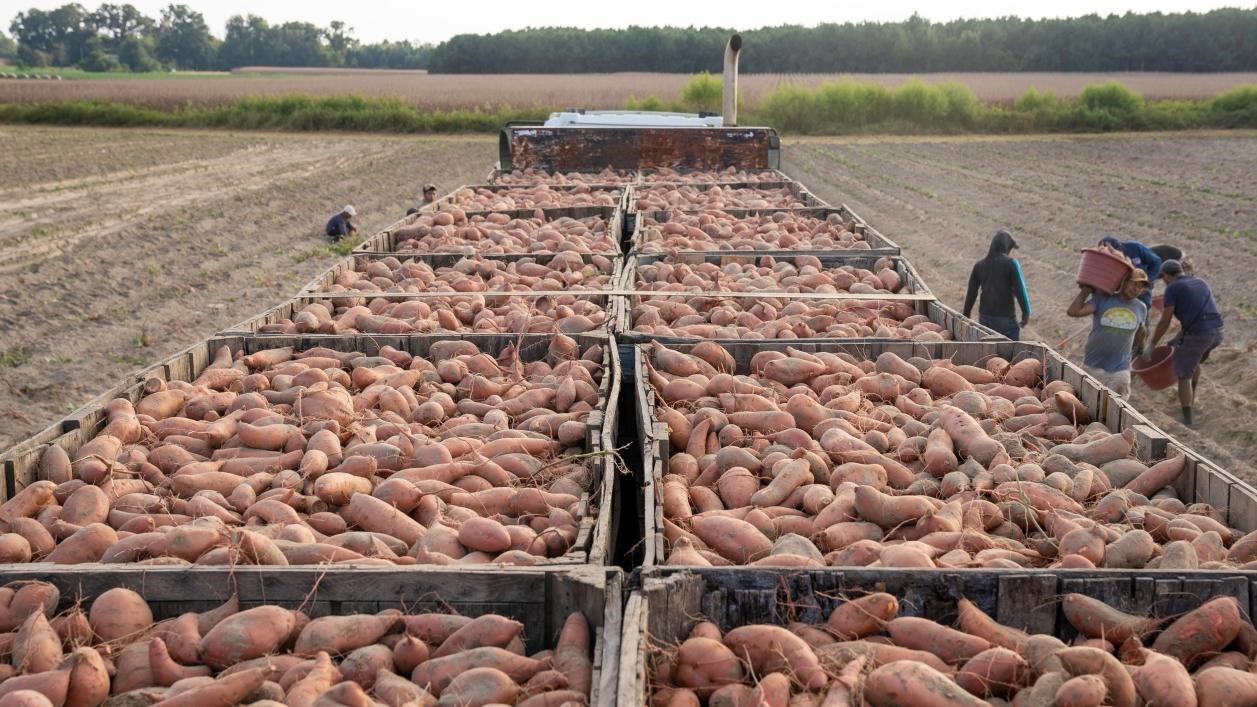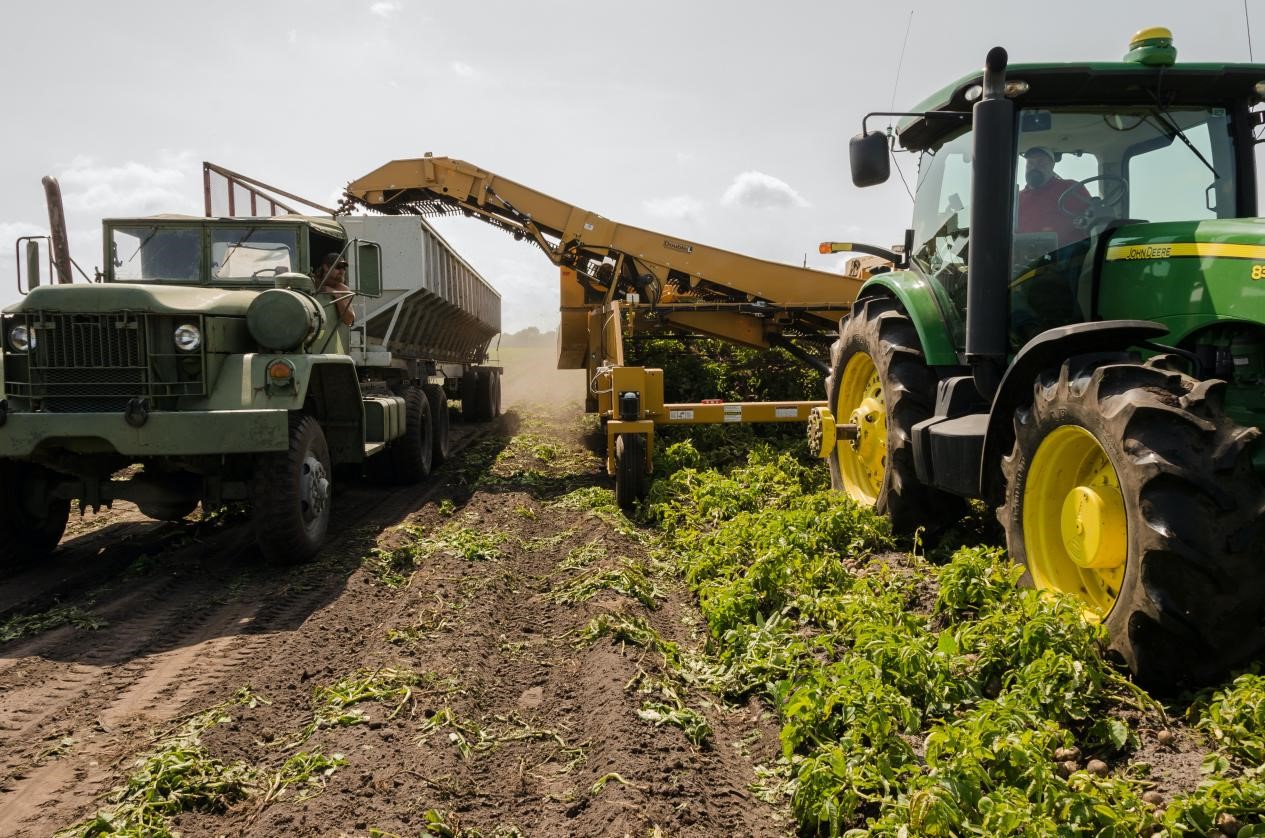

Food Transportation in Oman
Did you know that Oman is a critical player in the global food distribution network? In this blog post, we'll take a closer look at Oman's food transportation infrastructure and how it supports the country's growing food industry. We'll also explore some of the challenges involved in transporting food throughout Oman and how we at Emdad Foods tackle those challenges.
As a country, Oman is highly dependent on food imports to meet the needs of its population. This reliance on imported food leaves the country vulnerable to disruptions in the supply chain. In recent years, Oman has experienced several challenges with food transportation, including delays at ports, shortages of truck drivers, and high fuel costs.
At Emdad Foods, we are committed to ensuring that our customers have access to the food they need, even in times of transportation challenges. We work closely with our clients to ensure that their supply of goods remains steady at all times. We also maintain a large fleet of trucks and drivers so that we can always meet all the transportation demands of our clients. And finally, we use state-of-the-art GPS tracking systems to minimize delays and keep the personnel at the receiving end informed about the status of the goods in transit.
Thanks to our commitment to excellence in food transportation, we are able to provide our clients with the highest quality of services and food products, even when others are struggling. If you are looking for a reliable food supplier in Oman, look no further than Emdad Foods. We will always be there to meet your needs.
The climate in Oman ranges from extremely hot and dry desert conditions in the interior to cooler, more temperate conditions along the coast. This diverse range of temperatures presents some challenges when it comes to transporting food throughout the country.
One of the most important things to consider when transporting food is keeping it at the proper temperature. In warmer climates, this means keeping food cool to prevent spoilage. In cooler climates, this means keeping food warm to prevent it from freezing.
Emdad Foods is the best food transportation company in Oman for a number of reasons. First, the company has a strong reputation for reliability and punctuality. Emdad Foods has a team of experienced drivers who are familiar with the roads in Oman and can get your food to its destination on time.
Second, Emdad Foods offers competitive prices for its services. The company understands that transporting food can be expensive, so they offer discounts for bulk orders and regular customers.
Third, Emdad Foods takes food safety seriously. The company has a strict policy of only transporting food that is properly packaged and labeled. This ensures that your food will not spoil during transport or be contaminated by other products.
Fourth, Emdad Foods is committed to excellent customer service. The company has a toll-free number that you can call if you have any questions or concerns about your order. A representative will be happy to help you with anything you need.
If you are looking for a food transportation company in Oman that is reliable, punctual, and offers competitive prices, then Emdad Foods is the best choice for you.

Logistics in 2022: Challenges, Status, Updates
The logistics industry is vital to the functioning of many businesses and organizations. It is responsible for ensuring that goods and materials are transported efficiently and effectively from one location to another.
The current status of the logistics industry is strong. Companies are investing heavily in this sector, and there is a growing demand for qualified professionals. The industry is expected to continue to grow in the coming years as more businesses rely on efficient logistics solutions. However, the industry is also currently facing a few hurdles and challenges. In this article, we will take a look at the latest updates and insights into the logistics industry.
The proliferation of new technologies and the ever-changing landscape of global trade means that logistics is becoming increasingly complex. In order to keep up with demand, logistics businesses are facing a need to invest in more sophisticated systems and processes.
The cost of doing business is increasing every day as a result of rising fuel prices, labor costs, and infrastructure investment. This puts pressure on margins and makes it difficult for logistics businesses to remain competitive.
The logistics industry is facing a talent shortage as a result of the retirement of baby boomers and the lack of young people entering the workforce. This is making it difficult for businesses to find the skilled workers they need to stay operational.
Ports are an essential part of the logistics chain, handling the vast majority of international trade. But they are also a significant source of delays and disruptions as well.
Cargo ships have to wait for days to dock at busy ports and then spend hours unloading and reloading their containers. These delays can add millions of dollars to the cost of shipping goods.
What's more, ports are often inefficient and congested, with billions of dollars worth of cargo sitting on ships waiting to be unloaded. This causes even more delays and disruptions.
Logistics companies are struggling to keep up with the demands of today's global economy. They need ports that are efficient and reliable, but these are becoming harder and harder to find.
Currently, there are many port status problems that logistics companies are facing. These problems can be divided into three main categories: infrastructural, operational, and financial.
Infrastructural problems include the inadequate state of ports and port facilities, which results in delays and disruptions in the flow of cargo. Operational problems include inefficient port operations, which lead to delays in cargo handling and clearance. Financial problems include the high cost of port services, which makes it difficult for logistics companies to compete.
The current port status problems have a negative impact on the efficiency of logistics operations and the competitiveness of logistics companies. They also cause delays in the delivery of goods and increase the cost of logistics services. In order to solve these problems, it is necessary to improve the infrastructure and operations of ports, as well as to reduce the cost of port services.
The current shipment problems that logistics companies are facing are mainly due to the ever-changing landscape of the shipping industry. These problems include, but are not limited to, the following:
As the world economy continues to grow, the demand for goods and services also increases. This, in turn, puts a strain on the already limited capacity of the shipping industry, which results in higher costs and longer waiting times for customers.
Another major problem faced by logistics companies is the lack of infrastructure development in many parts of the world. This includes both land and sea infrastructures, such as ports, roads, and railways. Without these basic facilities, it becomes tough and expensive to move goods around, which ultimately affects the bottom line of logistics companies.
In recent years, security has become a major concern for logistics companies. With the rise of terrorism and other criminal activities, many companies have been forced to invest heavily in security measures, such as armed guards and GPS tracking. This has not only increased their costs but has also made the shipping process more complicated and time-consuming.
With the increasing awareness of environmental issues, many countries have put in place strict regulations regarding the shipping of goods. These regulations can often be difficult to comply with, and failure to do so can result in heavy fines. As a result, logistics companies have to be extra careful when planning their routes and to handle their cargo, which can add to their costs.
The customer is always the king, and this statement is especially true in the logistics industry. As the world changes, so do the needs of customers. They now demand faster delivery times, better service, and more transparency. This puts a lot of pressure on logistics companies to keep up with the latest trends and technologies.
Despite all these challenges, experienced and specialized logistics companies like Emdad Foods are still managing to keep up with the ever-changing landscape of the shipping industry. They are constantly innovating and investing in new technologies to improve their services. Sooner or later, these problems will be solved, and the shipping industry will once again flourish.
The current China lockdown has caused major problems for logistics companies. With factories and businesses closed, there is little demand for shipping services. This has led to a sharp decrease in business for many logistics companies, which are now struggling to stay afloat. The situation is made even worse by the fact that many logistics companies have already been facing difficult times due to the ongoing trade war between the US and China.
The current US Ports Management problems with handling a considerable amount of ships affecting logistics companies are:
- Lack of transparency and communication
- Inefficient decision making
- Lack of coordination between different stakeholders
- Lack of standardization
These problems have led to inefficiencies and delays in the operations of logistics companies, which in turn have caused ships to be diverted to other ports. The lack of transparency and communication has been a significant issue, as there has been no clear information on the status of ship arrivals and departures. This has led to confusion and delays in decision-making.
Another problem is the lack of coordination between different stakeholders. There has been no clear coordination between the port authorities, shipping companies, and logistics companies, which has led to delays and disruptions in the operations. Finally, the lack of standardization has led to different companies using different systems and processes, which has made it difficult to track and manage the ships.
The current problems with US Ports Management need to be addressed in order to improve the efficiency of logistics companies and avoid ship diversions. Transparency and communication need to be improved so that there is explicit information on the status of ship arrivals and departures. Coordination between different stakeholders needs to be improved so that there is no confusion or delays in decision-making. Standardization needs to be implemented so that all companies are using the same systems and processes.
Emdad Foods has been an industry-leading 3PL company, operating in the food and beverage and agriculture industry for over 70 years. It offers best-in-class warehousing, packaging, and transportation services and provides complete supply chain solutions to businesses that aspire for greatness. Through creativity and flexibility, Emdad Foods provides tailored services to ensure the complete satisfaction of its B2B partners.
Emdad Foods takes on all the logistics challenges and disruptions head-on. Regardless of what logistics in 2022 is like, Emdad Foods is set to make it a highly productive year for itself. You can leverage the services it offers as well by getting in touch with Emdad Foods today.

The Benefits of 3PL Companies in Food Beverage Sector
3PL companies are a great alternative to the traditional companies that take on distribution for the food & beverage sector. Food companies can hugely benefit from third-party providers of logistics as they specialize in the distribution and storage of beverage and food products and transport them directly to grocery chains. This way, the food companies are able to form direct and friendly relationships with retailers and avoid distributor markups. The cold chain and inventory management are also a strong forte of 3PL companies that enable food manufacturers to enjoy higher returns.
Here are some of the benefits of 3PL companies for the food & beverage sector:
Unlike traditional food distribution companies, 3PLs bring to the table a diverse range of efficiencies that increase the profitability and security of food companies. They keep a constant and close eye on the marketplace activities and verify references, carrier insurances, and keep track of fraudulent activities. They have transportation insights that help improve operational processes and responsiveness of the brands operating in the food & beverage sector.
Furthermore, they help enhance visibility across the supply chain and reduce costs of different activities as well. Food companies can track their shipments through 3PL resources and strategize and plan their operations accordingly. 3PL companies also enrich the productivity of the food & beverage sector by providing different data and analytics to food companies pertaining to the market that they can evaluate and analyze to improve their processes.
The different issues and challenges that the food & beverage sector faces include food safety, regulatory compliance, improper storage, and limited warehousing capacities. Source-to-shelf time is an important aspect for some products, while others need to be stored within certain specific environments. A 3PL company does not just have a business objective of distributing products but is created to cater to these challenges as well.
A 3PL company has state-of-the-art equipment and storage warehouses that are equipped with the most modern technology to fulfill the needs of specific food and beverage products. With collaboration, communication, and readiness, and adaptability to take on unforeseen emergencies head-on, 3PL companies ensure that the customer experience with the food products is exceptional and beyond satisfactory.
With their expertise and knowledge, personnel operating within 3PL companies can provide to time and temperature-specific foods’ needs. By ensuring on-time deliveries and secure warehousing and storage, 3PL companies can add significant amounts to your dough.
Leveraging the experience and the vast network of 3PL companies, you can improve your food supply chain processes and systems and grow sales. The distributors in a 3PL company are trained to maintain healthy and close-knit relationships with grocery chains. This allows them to get behind your products for additional support. The responsibility and cost that you have pertaining to sales management shifts to 3PLs, and your brand experiences a gained traction in the market.
If your company operates in the food & beverage sector, add strength to your logistical capabilities by partnering with Emdad Foods. It is a 3PL that stays up-to-date with the latest technological advancements for food safe-keeping and storage and offers you the best-in-town warehousing services. Compliance with new regulations and on-time deliveries being its forte, Emdad Foods, leverages the cloud to ensure increased productivity and higher sales for food companies of all kinds.